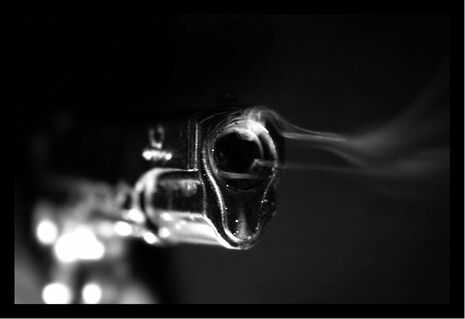Betrayal: a polyphonic crime drama
Patrick Dunachie is mesmerised by this extraordinary evening of murder, dancing and unsettling harmonies

Within the confines of a newspaper review, it is almost impossible to describe this show and quite how extraordinary it is. I use the word 'show' because it cannot really be described as a concert: when one goes to see a concert, one expects to sit down and watch a performance from a stage. In Betrayal, there is no stage - the singers and dancers are in amongst the audience - and rather than sitting to watch, the audience are free to walk around and choose what it is they see and hear. I use the word 'extraordinary' because Betrayal really is outside of the ordinary bounds of a 'classical music' performance; it is more vocally and musically demanding than anything else I have ever seen, and more conceptually daring than any other piece of theatre I have ever experienced.
The show is called Betrayal in reference to the composer of its music, the Italian prince, Carlo di Gesualdo (1566 - 1613), who famously murdered his wife having caught her in flagrante with another man. Gesualdo's music is well known for being extremely complex and dissonant for the time in which he was writing - frequently compared with El Greco in the world of art - and he is often portrayed as a madman, writing mad music which reflected a troubled soul. Having sung some of Gesualdo's music, I can testify that it is not easy at the best of times. Even in a traditional, safe, concert setting, to sing these complicated and chromatic lines is no mean feat. Yet to sing Gesualdo in a nightclub, in the dark, from memory, in character, whilst interacting with a dancer and separated from the nearest singer by five metres, must be almost impossible. But the singers of I Fagiolini, under the direction of Robert Hollingworth, managed it with extraordinary skill, precision and apparent ease.
Betrayal features six singers (each of whom sing one of the parts in Gesualdo's music) and six dancers (who play the singers' lovers) forming couples who, to some extent, reflect the troubled relationship Gesualdo had with his wife. Over the course of the production, each of these couples play out a narrative - through the medium of both Gesualdo's music and also captivating dance - in which lust, jealousy, envy, joy, hatred and regret are explored, with often alarming, violent or otherwise deeply affecting intensity. Under the direction of John La Bouchardière, these couples display complicated relationships – each completely involving in its own right – which build to a distressing climax near the end of the show.
Crucial to the success of this performance is that the audience member is not able to be passive in it: by standing to watch the singing and dancing up close, and also being issued with a torch to see in an otherwise dark room, one is forced to become involved in the drama and the beauty of this musical and visual spectacle. At one point, I remember having to scramble out of the way of a dancer, whose impossibly flexible body was flailing wildly out into the audience. The effect is more like an installation than a concert; the audience are intruders on deeply intimate and sometimes erotic moments in the lives of these couples.
Whether you like singing, dancing, acting, intense emotion, nightclubs, torches, dissonant renaissance counterpoint or just good art, please take the time to go to The Junction tonight and see one of the most involving, shocking and enlightening pieces of art you will ever see. All for only £5. You won't regret it.
 Interviews / ‘People just walk away’: the sense of exclusion felt by foundation year students19 April 2024
Interviews / ‘People just walk away’: the sense of exclusion felt by foundation year students19 April 2024 News / John’s spent over 17 times more on chapel choir than axed St John’s Voices22 April 2024
News / John’s spent over 17 times more on chapel choir than axed St John’s Voices22 April 2024 News / Corpus student left with dirty water for over six months21 April 2024
News / Corpus student left with dirty water for over six months21 April 2024 Theatre / The closest Cambridge comes to a Drama degree 19 April 2024
Theatre / The closest Cambridge comes to a Drama degree 19 April 2024 News / Copycat don caught again19 April 2024
News / Copycat don caught again19 April 2024





